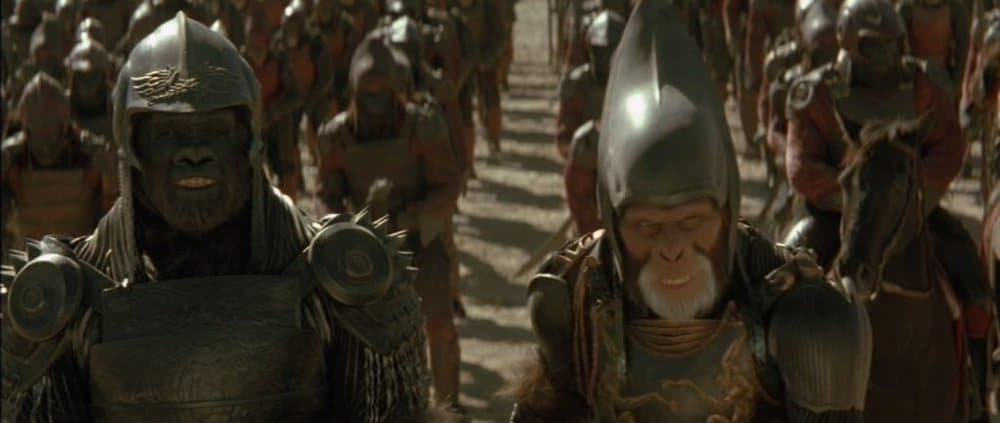Every month, we at The Spool select one Filmmaker of the Month, honoring the life and works of influential auteurs with a singular voice, for good or ill. With Tim Burton’s Dumbo coming out in just a few weeks, we’ve chosen to dedicate March to Hot Topic’s favored son, and his intriguing, singular body of work.
Growing with the directors who helped you grow into your love of cinema is almost never easy in America. The people responsible for those impulses tend to be stylists of a flamboyant sort, people who make sure you know every second who’s behind the camera. Whether that’s through ostentatious music cues, precisely manicured compositions, overpowering costume or art direction, or a sensibility that almost has to parody itself every once in a while to stay alive is dealer’s choice. Why is it inevitable? Well, once people realize you are who you are, stopping yourself from being that kind of artist can be as difficult as continuing without repetition.
The directors who defined American cinema through the 1980s, 1990s, 2000s and who are still working have either had to face critics turning away from them as they become a different version of themselves or stayed the same at the risk of being pegged as monotonous. The Coen Brothers, Spike Lee, Wes Anderson, M. Night Shyamalan, Michael Bay, Gore Verbinski, Paul Thomas Anderson, Michael Mann – the men who tend to get all the money, work the most and/or are highly visible – all have either faced derision for trying out something new or have been lambasted for changing an established approach.
Burton, like Terry Gilliam before him, became known for everything dark and sinister in the Hollywood landscape from kid-friendly gallows
Not every film was a hit (Ed Wood and James and the Giant Peach, which he produced, both bombed though they’re quite well-regarded today), but when he struck gold it was always a bonanza. Whereas now you’d have to look long and hard to find someone old enough to drink

The downfall begins in earnest with 2001’s Planet of the Apes remake. The film bore none of Burton’s stylistic hallmarks and though there’s a lot to admire, there’s
Talk to most fans of his early work and they’ll tell you this is about where they lose touch with him. The run from 2005’s PTSD-inducing Charlie and The Chocolate Factory, which bafflingly turns Roald Dahl’s reclusive dream maker into Michael Jackson, through to 2016’s Miss Peregrine’s Home For Peculiar Children has few staunch fans. It’s generally agreed that this was when the old Burton ceases to be himself, and I’d really like to be one of the people who could walk away from the one-time hitmaker, but I can’t. I keep seeing him in the movies I’m told are self-parody, and I can’t stop wanting to.
There’s a rather helpful Rosetta Stone for this period: his music videos for The Killers. In the first, for the song “Bones,” two lovers take their skin off to go swimming together. They’ve just come from watching Harryhausen’s best work on the claymation skeleton fencing sequence in Don Chaffey’s Jason and the Argonauts. The key difference is that the skeletons in Burton’s video are computer generated, the same kind of plasticine animation that seemed to separate him from his fans in Charlie and the Chocolate Factory and Alice in Wonderland. And it’s true that Charlie is an eye-searing panic attack – like someone left a Jonas Akerlund film in their jean pocket and accidentally ran it through the wash – but the impulse to try new things shouldn’t always be chased away.
He retreated afterward into Sweeney Todd and found his footing again, but it turns out he was right to think of CGI as the future. Alice In Wonderland was the second highest grossing film of 2010. His second music video was for the song “Here With Me,” in which a young and wide-eyed Craig Roberts romances a wax doll that turns into Winona Ryder whenever they’re alone. It’s the ugliest part of Burton’s fetishism as a filmmaker turned into a deliberately unsettling, anti-social fable. He was the kid who saw life in dead materials, who turned clay into lovable characters that launched a thousand Hot Topic shirts. What became unknowable was what he saw in computer animation that he no longer saw in the materials he used in stop-motion. That claymation vs digital came to summarize the rift at the heart of Burton’s work makes him a fascinating figure at the crossroads of audience satiation.